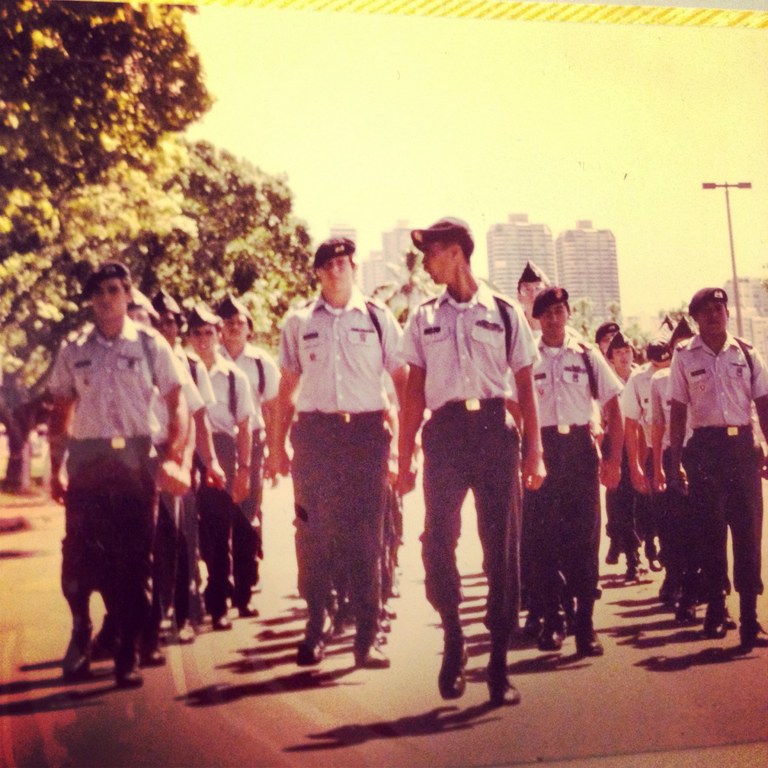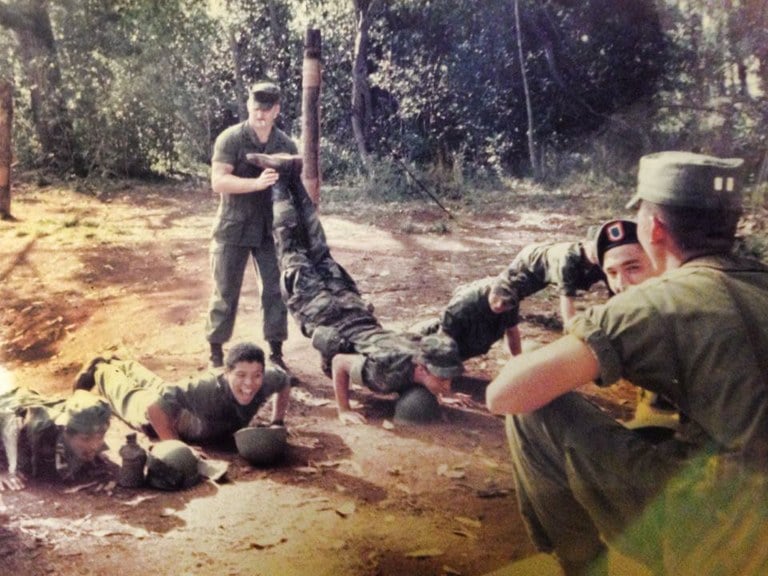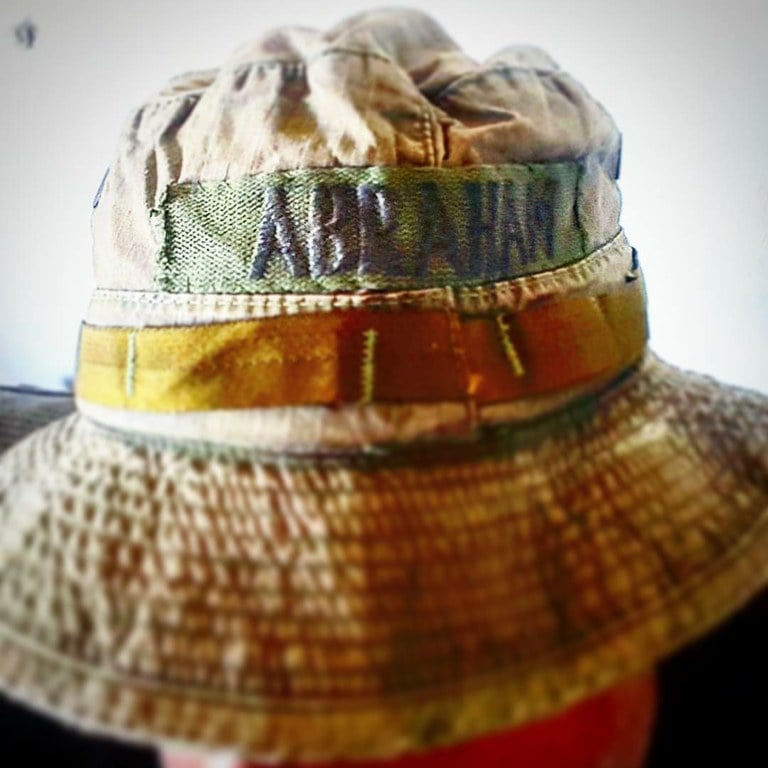Beyond the Black Berets
The original piece, "The Secret Life of Saint Louis JROTC Rangers in the 1980s," captured a potent and personal portrait of an elite, unofficial brotherhood within a Catholic school’s military prep program in Hawaii. This expanded version dives deeper—into the history of JROTC, the unique context of Saint Louis School, and the unspoken rituals that shaped the lives of its Rangers. We’ll explore not only the camouflage and code of silence, but the identity politics of being a haole, the lineage of the Army’s youth leadership programs, and the legacy that remains.

Origins: A Catholic Military Culture
Saint Louis School in Honolulu was founded in 1846 and became a haven for discipline, structure, and tradition. A Marianist institution, it cultivated boys into leaders—whether they wore football pads, altar robes, or combat boots. By the 1980s, its Army JROTC program had become one of the most respected and well-supported in the state.
While many JROTC programs across the U.S. focused on civics and leadership, the Saint Louis version—especially in its Rangers incarnation—blurred the lines between simulation and initiation.
What Is Army JROTC?
Founded in 1916 via the National Defense Act, Junior Reserve Officer Training Corps (JROTC) was designed to prepare American youth to become better citizens. Despite military trappings—uniforms, drill, marksmanship—it wasn’t a recruitment funnel. Not officially.
But in practice—especially in the Cold War '80s—it sometimes became one. In Hawaii, surrounded by bases and military culture, this dynamic was amplified. At Saint Louis, the JROTC was both a leadership course and a rite of passage.

Who Were the Rangers?
The Ranger Club at Saint Louis was a volunteer, selective unit inside the larger JROTC program. They weren’t recognized by the Army in any formal way—but their black berets, jump boots, and combat drills made them unmistakable.
These were kids—15, 16, 17 years old—playing OPFOR (opposing force) against real National Guard and Reserve troops. Their gear wasn’t props. Their rifles weren’t toys. Their exercises weren’t play. They were, essentially, a volunteer unit of teenage insurgents-for-hire.

Life in the Shadows: Weekly Training
-
Thursdays: Class A inspection, parade drills on the football field, formation.
-
After school: secretive fieldcraft drills in the jungle.
-
Weekends: full-blown simulated warfare against adult troops.
The Sergeant Major, never named here out of respect, orchestrated everything. He was part father figure, part warlord, part myth.
The Rangers trained in jungle fatigues, face paint, ALICE web gear, and M81 BDUs. They practiced ambushes, E&E (escape and evasion), and weapons handling. They learned how to become shadows.

The Cover Story: Soviet Youth Operatives
To justify their youthful age in simulations, a mythology was born: the cadets were supposedly Spetsnaz-trained Soviet infiltrators. Dropped behind U.S. lines to sow chaos. It was absurd. It was brilliant. It gave the exercises context, stakes, and danger.
And the kids? They believed it.
Identity in Uniform: Being a Haole
Chris Abraham wasn’t just a Ranger—he was a haole in Hawaii. A white outsider in a Polynesian and Asian-majority culture. In school, that identity came with baggage. But the uniform changed the calculus. Rank trumped race. The beret was a passport.
Still, being a haole meant knowing you were always just a few inches outside the circle. Even in a brotherhood, the line between inclusion and performance was razor-thin.

Danger, Silence, and the Code
-
Real NATO-pattern rifles with blank adapters.
-
Actual M60s, M16s, and .22s used on the school’s live-fire range.
-
Cadets issued 5.56mm and 7.62mm blanks, safely used with blank-firing adapters.
-
Hazing incidents passed down as whispered folklore.
-
Camaraderie forged in shared fear, shared discipline, shared lies to parents.
They didn’t talk about it. Because they couldn’t. Because it wasn’t just forbidden—it was unbelievable.
Tools of the Trade: Gear, Ritual, and Memory
-
G-Shocks with Velcro bands
-
Field jackets from Schofield PX
-
Slash-pocket jungle greens
-
M16 rubber ducks and 30-round mags taped jungle-style
-
Camouflage that felt like skin
-
Leather jump boots polished to a mirror—but cracked from wear
Their loadouts were real. Their trauma was low-level but ever-present. Their silence was sacred.
Character Sketches
Charlie – The original Ranger archetype. Older. Confident. Wore cracked, glistening jump boots like medals. His beret formed perfectly to his head. Eyes cruel, grin wide. Not a bully, but never soft. He showed you who you could be—and warned what it would cost.
The Sergeant Major – Architect of the mythos. A one-man training cadre. Demanded silence, exactness, and honor. Never shouted—only stared until the world reassembled around him. He’d hand you a rifle and somehow convince your mother it was just a school trip.
Legacy and Aftermath
Most Rangers didn’t go on to special operations. Some didn’t even enlist. But all of them carried that experience like a second skin.
-
Some went corporate, but never lost their bearing.
-
Some became artists, but still squared their corners.
-
Some never spoke of it again—but never forgot.
They weren’t just playing soldier. They were pretending to be insurgents, to train soldiers to be real soldiers.
Appendices
Appendix A: 1987 Ranger Loadout
-
Black beret with stitched school crest
-
Cracked and polished jump boots
-
M81 BDU pants and jacket
-
Slash-pocket Vietnam jungle fatigues
-
ALICE pack and web gear
-
L-shaped flashlight, camo paint, field cap
-
M16s with BFA (blank firing adapter)
-
5.56mm and 7.62mm blank rounds
-
Banana mags taped jungle-style
-
Velcro-band Casio G-Shock (DW-5000, screwback original or 5600 variant)
Appendix B: Cadet Characters
-
Charlie: Legend, mentor, warning.
-
Sergeant Major: Unnamed, unforgettable, a ghost in spit-shined boots.
-
Chris: From haole to Ranger. From outsider to operator. From boy to something harder to define.
Appendix C: Code of Silence and Unspoken Rules
-
Never speak outside the brotherhood.
-
Never confirm what happened on OPFOR weekends.
-
Never betray the Sergeant Major.
-
Always square away your uniform.
-
Always protect the gear—even your rubber duck.
Appendix D: Glossary Expansion
-
Banana mag: curved 30-round rifle magazine
-
Taped jungle-style: magazines duct-taped together in opposing directions
-
OPFOR: opposing force; enemy role in war games
-
Ranger Club: unofficial elite cadet unit
-
ALICE: military gear system for carrying equipment
-
BFA: blank-firing adapter, usually red and screwed onto muzzle
-
BDUs: battle dress uniform; standard camo pattern
-
Rubber duck: non-firing training rifle
-
Haole: non-native Hawaiian, especially white
Appendix E: Year-by-Year Cadet Journey
-
Freshman: First exposure, Class A uniform, formation and parade drills
-
Sophomore: Rifle team, .22 marksmanship, minor leadership roles
-
Junior: Fieldcraft, advanced drills, potential Ranger recruitment
-
Senior: Ranger veteran, instructor-in-training, OPFOR leadership
FAQ
Was this program officially sanctioned by the U.S. military?
Not in the way it functioned. The JROTC program was, but the Ranger Club operated in a grey area with unspoken military support.
Did they use real guns?
Yes. Real NATO-pattern rifles, modified with blank adapters. Only blank ammunition—5.56mm and 7.62mm blanks—was issued for cadet use.
How old were the cadets?
Most were between 14–17 years old.
Was this safe?
Not by today’s standards. Not even by 1980s standards. But it happened.
Is this documented?
Only in memories, and in the silence between them.
Final Word
The story of the Saint Louis JROTC Rangers is a memory unearthed. A secret not betrayed—but finally given form. The kids who wore the black berets were neither saints nor soldiers. They were something else.
Something in between.
Chris Abraham's Memoir of the Saint Louis JROTC Rangers
A Haole's Beginning
When I was in my first year at Saint Louis School, an all-boys Catholic institution nestled in the hills above Honolulu, I noticed them—uniformed men, army types, who roamed the campus every Thursday. I had just made the leap from public elementary school, where my teachers were tiny, patient Japanese women and life was full of sun and warm wind. But now I was wearing an aloha shirt and slacks, trying to blend into a culture that didn’t always have a place for me.
I was a haole. A white kid. At best, a patch on a Hawaiian quilt. At worst, a tear.
I clawed my way into Saint Louis, desperate to avoid Central Intermediate School, where most of the Mokes and Titas went. I was determined to disappear into the uniform.
JROTC Thursdays
In high school, every Thursday was JROTC day. Cadets wore their Class A uniforms—envelope caps, slacks, brass polished to blind. We marched onto the football field and drilled with wooden rifles, forming lines, saluting instructors, perfecting formation.
But some cadets wore more than just Class A’s. Some wore shiny black jump boots. Some bloused their jungle cammies. Some wore berets, their crests stitched with school colors.
Those were the Rangers.
Becoming a Ranger
Charlie was one of them. A junior. A legend. His boots were scuffed and gleamed like cracked obsidian. His beret was molded to his skull. He grinned like a devil and looked you dead in the eyes. When he rolled that beret and tucked it under his epaulette, it was like he unsheathed a weapon.
I was hooked. I quit the rifle team and joined the Ranger Club.
The Code
The Ranger Club wasn’t just a club. It was a secret society. A brotherhood. There were rules—unspoken, but enforced. Break the silence and you risked everything: the Sergeant Major’s job, the program’s existence, the trust of the National Guard who looked the other way.
We didn’t just drill. We trained. Ambush tactics. Jungle movement. Escape and evasion.
Field Missions
Every other weekend, we became OPFOR. The opposing force. The enemy.
We were hired out by the National Guard, the Reserves, and sometimes even Force Recon Marines. We carried real M16s with blank adapters. We taped our banana mags jungle-style. We blackened our faces and carried ALICE packs through the jungle.
Our parents signed field trip forms. They thought we were camping.
The Cover Story
To explain our youth, a mythology was born: we were Spetsnaz-trained operatives. Soviet child soldiers, dropped behind enemy lines. It was a cover story, a joke, a lie.
And we believed it.
Hazing and Hierarchy
Some of the stories were just that—stories. Legends passed down. Like the one about a Ranger caught in an ambush, strung to a tree in his skivvies with riot cuffs. Hazing was ritual. Initiation. You had to earn the right to be trusted.
Silence and Steel
We never talked. Not because we couldn’t, but because no one would believe us.
We wore G-Shocks on Velcro bands. We carried rubber ducks. We bloused our pants into boots that stank of sweat and saddle soap. We whispered when we passed each other in class.
We didn’t need to speak. We had all seen the same jungle.
Epilogue: From Cadet to Memory
Some of us joined the military. Most didn’t. Some became artists. Some vanished into the world.
But every one of us remembered.
We weren’t just playing soldier.
We were pretending to be insurgents so real soldiers could learn how to fight.
We were the Saint Louis Rangers.
And for a long time, we didn’t talk about it.
Until now.

